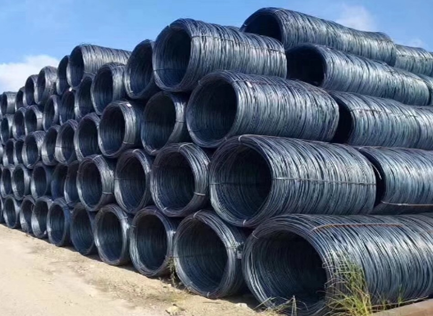News

Steel wire rods are a crucial component in various industries, serving as a fundamental raw material for manufacturing a wide array of products. These wire rods possess distinct characteristics and properties that make them indispensable in applications ranging from construction and automotive to manufacturing and infrastructure. Understanding the characteristics of steel wire rods is essential to appreciate their versatility and significance across diverse sectors.
- Steel wire rods are primarily made from low-carbon or high-carbon steel. The composition can vary, including alloying elements such as manganese, silicon, and sometimes trace amounts of other metals to impart specific properties.
- Low-carbon steel wire rods offer good ductility, weldability, and formability, making them suitable for applications requiring flexibility and shaping.
- High-carbon steel wire rods exhibit increased strength and hardness, making them suitable for applications demanding higher mechanical properties.
- Tensile Strength: Steel wire rods are known for their high tensile strength, which determines their ability to withstand pulling forces without breaking.
- Yield Strength: The yield strength represents the point at which the steel rod begins to deform permanently under applied stress, a crucial factor in structural applications.
- Surface finish varies depending on the manufacturing process. Wire rods may have a bright, polished surface or a more matte finish based on specific requirements.
- Some wire rods are coated or plated with materials like zinc (galvanized) or other coatings to enhance corrosion resistance or improve specific characteristics for particular applications.
Steel wire rods come in a broad range of diameters, typically from 5.5 mm to 22 mm. Different applications demand varying diameters, and manufacturers produce wire rods to precise specifications based on industry requirements.
Wire rods are often supplied in coil form, with weights ranging from a few kilograms to several tonnes. The length of the coils can vary based on customer needs and manufacturing capabilities.
- Steel wire rods are typically produced through a hot rolling process. In this method, the steel is heated to high temperatures and then passed through rolling mills to reduce its diameter to the desired size.
- The hot rolling process refines the grain structure of the steel, enhancing its mechanical properties and overall strength.
- After hot rolling, some wire rods undergo a cold drawing process where they are drawn through dies to further reduce their diameter and improve their surface finish and dimensional accuracy.
- Steel wire rods find extensive use in construction for reinforcement purposes, such as in concrete reinforcement (rebar), pre-stressed concrete, and other structural applications due to their strength and durability.
- They are also utilized in various infrastructure projects like bridges, buildings, and tunnels.
- Wire rods are essential in the automotive sector for manufacturing components like springs, cables, fasteners, and tire reinforcements due to their strength and resilience.
- Steel wire rods serve diverse industrial needs, including in the manufacturing of wires, ropes, fencing, nails, screws, and mesh due to their malleability, strength, and corrosion resistance.
- Wire rods are used in agricultural applications for fencing, stakes, and supports. Additionally, they find usage in everyday consumer goods like household appliances, furniture, and DIY products.
Steel wire rods, being predominantly made of steel, are highly recyclable. The recyclability of steel contributes to sustainability efforts by reducing environmental impact and conserving resources.
Using steel wire rods in various applications aligns with sustainability goals, as steel is one of the most recycled materials globally. Its durability and recyclability help minimize waste and resource depletion.
- Wire rods are manufactured in compliance with international standards and specifications, ensuring consistency in quality, size, and mechanical properties.
- Quality control measures involve rigorous testing for mechanical properties, dimensional accuracy, surface finish, and adherence to specific standards to meet the requirements of various industries.
Steel wire rods, with their diverse mechanical properties, surface finishes, and applications, serve as indispensable materials across numerous industries. From construction and automotive to manufacturing and consumer goods, their versatility and reliability make them a foundational element in the production of a wide range of products. Understanding the characteristics and properties of steel wire rods is vital for appreciating their role in various sectors and their contribution to the functionality, strength, and resilience of countless applications.
